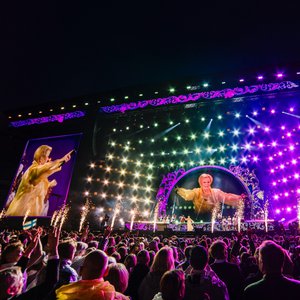How to Create a Memorable Brand Identity for Your Restaurant
Your brand is much more than just a logo or a color scheme—it’s the entire experience your customers have with your restaurant. From the atmosphere you create to the way your staff interacts with guests, every element contributes to how your brand is perceived.
A clear and well-executed brand identity can help you attract loyal customers, differentiate yourself from competitors, and build lasting relationships with your audience. It communicates what makes your restaurant unique and why customers should choose you over others. Whether you’re opening a new restaurant or refining your current identity, understanding the key elements of branding will help you create an experience that resonates with your customers.
This guide covers essential steps to define your brand identity, craft compelling visuals, and design an ambiance that reflects your values.
Defining Your Restaurant's Unique Identity
Before you start creating logos or designing interiors, it’s important to define what makes your restaurant unique. Your brand identity should be built around your values, mission, and what sets your establishment apart from competitors.
Start by identifying your target audience. Are you catering to families, foodies, or professionals? Understanding who your ideal customer is will help you shape your messaging, menu, and overall concept. For example, a high-end steakhouse might emphasize elegance and sophistication, while a casual café may focus on warmth and approachability.
A critical part of your brand identity is how your staff is presented. Partnering with a reliable restaurant uniform vendor can help align your employees' appearance with your brand image. Whether you choose formal attire for a fine-dining restaurant or casual uniforms for a laid-back eatery, the consistency in staff presentation reinforces your professionalism and leaves a lasting impression on guests.
Once you’ve outlined your core values and audience, make sure every aspect of your business reflects this identity. From your menu design to the tone of your social media posts, consistency is key to building a cohesive and memorable brand.
Crafting a Memorable Logo and Visuals
Your logo and visuals are often the first things customers notice about your brand. A strong logo not only grabs attention but also communicates the essence of your restaurant in a single glance. It should be simple, memorable, and relevant to your concept.
When designing your logo, think about the colors, fonts, and shapes that align with your brand’s personality. For example, bright and bold colors might work well for a playful, family-friendly diner, while muted tones can evoke a sense of sophistication for a fine-dining establishment. Similarly, fonts can convey different feelings—serif fonts often feel traditional, while sans-serif fonts feel modern and clean.
Your visuals should go beyond the logo. Consider how your menus, signage, and even social media posts can reinforce your brand identity. Cohesive design across all customer touchpoints creates a professional and unified look that makes your restaurant more recognizable.
If you’re not a designer, hiring a professional to create your logo and branding materials can be a worthwhile investment. The goal is to create visuals that are not only attractive but also effectively communicate what your restaurant stands for.
Designing an Ambiance That Reflects Your Brand
The ambiance of your restaurant plays a crucial role in how customers experience your brand. Every detail, from the lighting to the seating arrangement, contributes to the atmosphere and should align with your brand’s identity.
Start by thinking about the mood you want to create. A romantic restaurant might use dim lighting, soft music, and intimate seating arrangements to create a cozy atmosphere. In contrast, a modern café might feature bright lighting, upbeat music, and communal tables to encourage a lively and social environment.
Décor is another important factor. Choose materials, colors, and decorations that match your brand’s personality. For example, a rustic farm-to-table restaurant might incorporate wood and natural elements, while a sleek urban eatery might focus on minimalistic designs and metallic accents.
It’s also important to consider the practical aspects of your design. Your layout should be functional, making it easy for staff to move around and for guests to feel comfortable. Additionally, ensure that your ambiance aligns with your target audience’s expectations. A family-friendly restaurant should provide ample seating for larger groups, while a high-end restaurant might prioritize privacy and exclusivity.
Developing a Consistent Voice and Messaging
Your restaurant’s voice should be consistent across all platforms and materials, from your menu descriptions to your social media posts. Start by identifying how you want your brand to sound. For instance, if your restaurant focuses on fine dining, your tone might be elegant and refined. On the other hand, a casual café might use a friendly and conversational voice. Once you’ve established your tone, apply it consistently to all your marketing channels, including advertisements, website content, and customer interactions.
Your messaging should also align with your target audience’s expectations. If your customers value sustainability, highlight your use of locally-sourced ingredients and eco-friendly practices. If you cater to families, emphasize your kid-friendly menu and welcoming atmosphere. Being clear and authentic in your messaging builds trust with your customers and helps them connect with your brand.
For tips on crafting effective marketing messages, check out this guide on how to create a great restaurant marketing strategy. Clear and consistent messaging not only strengthens your brand but also makes your restaurant more memorable.
Leveraging Digital Platforms to Build Your Brand
In today’s digital age, your online presence is an extension of your restaurant’s brand. Customers often search online for restaurants before deciding where to eat, so having a strong digital presence is essential.
Start by building a professional website that reflects your brand identity. Your website should include essential information such as your menu, location, hours, and contact details. Use visuals and design elements that align with your restaurant’s theme to create a cohesive experience. For example, a modern café might use clean lines and bright colors, while a rustic restaurant might feature earthy tones and hand-drawn graphics.
Social media platforms like Instagram, Facebook, and Twitter are also powerful tools for showcasing your brand. Use high-quality photos to highlight your dishes, share behind-the-scenes content, and engage with your audience. Consistency in your visuals and tone across these platforms reinforces your brand identity and builds recognition.
Encourage satisfied customers to leave reviews on platforms like Google and Yelp, as positive feedback can enhance your online reputation. Additionally, responding to reviews demonstrates that you value customer opinions and are committed to improving their experience. For advice on managing your online reputation, refer to this guide on how to maintain a strong digital presence.
A well-executed digital strategy not only attracts new customers but also helps you stay connected with your existing ones, ensuring your brand remains top-of-mind.
In conclusion,
creating a memorable brand identity for your restaurant goes beyond creating a logo or a catchy slogan. You must define your unique values, present a cohesive image, and deliver a consistent experience that resonates with your customers. A strong brand helps you stand out in a competitive market and builds trust and loyalty among your customers.











